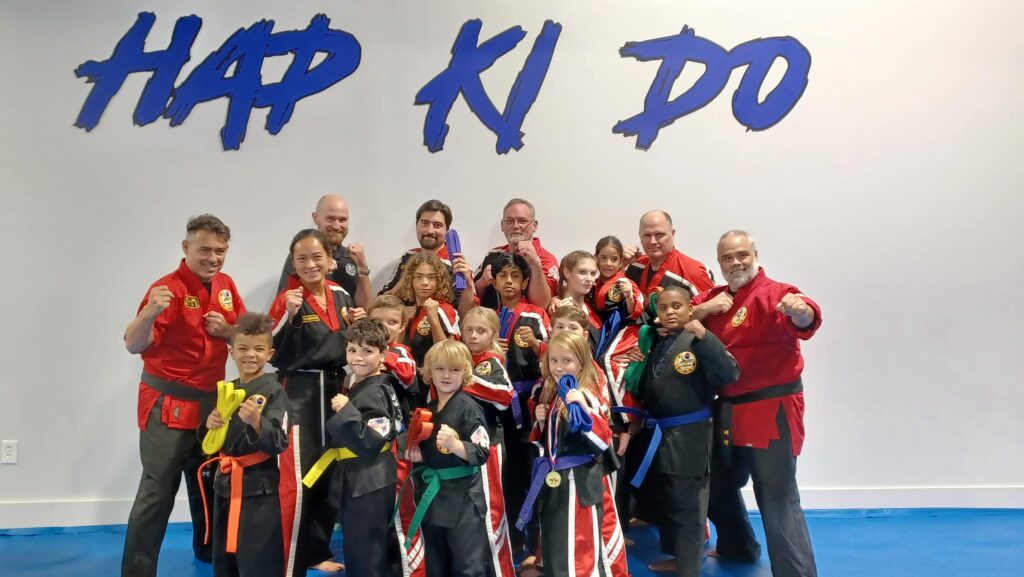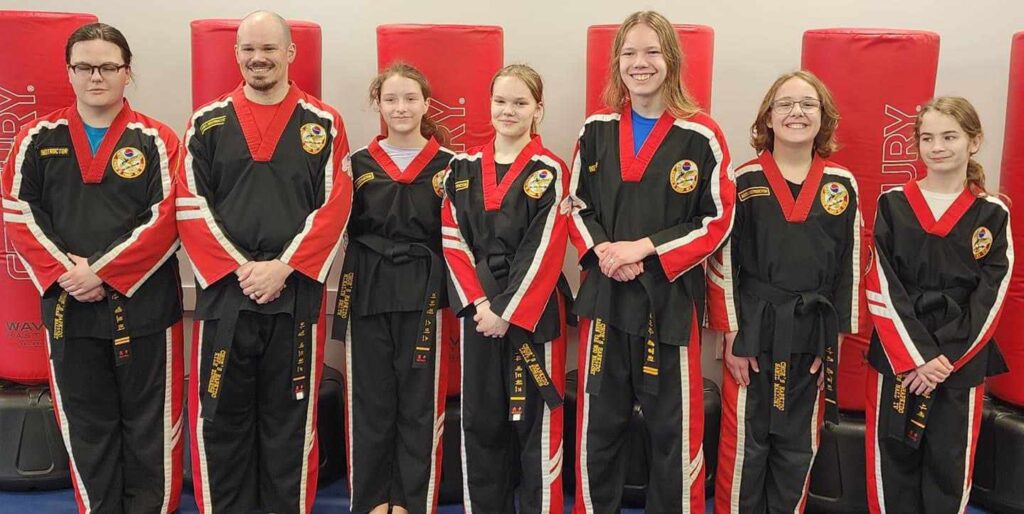Self-Defense Made Simple: Start Your Karate Journey Today

In a world where personal safety is a growing concern, learning self-defense has never been more important. Karate, a time-honored martial art, offers a practical and empowering way to protect yourself while improving your physical and mental well-being. At Choe’s HapKiDo, we make self-defense simple and accessible for everyone, regardless of age or fitness level. […]
5 Life Lessons You Learn Through Martial Arts Training

The benefits of martial arts go far beyond earning belts. At its core, martial arts is a journey of personal growth, one that instills valuable life lessons that shape individuals both on and off the mat. Whether you’re a child, teen, or adult, martial arts offers timeless lessons that stay with you for life. Here […]
Kickboxing and Karate: The Perfect Fitness Combo for Adults

In today’s busy world, finding the perfect fitness routine can be a challenge. Many adults struggle to balance exercise with work, family, and social commitments. Enter kickboxing and karate—a dynamic fitness duo that offers physical, mental, and emotional benefits. At Choe’s HapKiDo, these programs combine the best of martial arts and fitness training, making them […]
Martial Arts Classes for Kids: Building Confidence Through Choe’s HapKiDo

In today’s fast-paced world, children face many challenges that can affect their confidence and self-esteem. Academic pressures, social dynamics, and the constant influence of technology make it more important than ever for kids to develop resilience and self-assurance. One effective way to foster these traits is through martial arts training. At Choe’s HapKiDo, children not […]
Achieve Success in Martial Arts with SMART Goals

As the year comes to a close, it’s the perfect time to reflect on your achievements and plan for an even better 2025. Setting goals is essential for personal growth, especially in martial arts. At Choe’s HapKiDo, we believe that clearly defined goals help students achieve their full potential both on and off the mat. […]
Overcoming the Winter Blues: Go To Class Anyways!

When winter arrives, the shorter and colder days can cause many people to feel unmotivated. The “Winter Blues” slump makes it harder to stay active and to stick to routines, including martial arts training. As it’s tempting to stay cozy at home than attend class, showing up anyways is one of the best ways to […]
Gratitude Benefits Mental Health: A Key to Wellness

As we navigate through daily life, the practice of gratitude offers more than just a way to appreciate the good things around us—it has profound benefits for our mental health. At Choe’s HapKiDo, we emphasize the importance of gratitude not only as a mental practice but as a way to strengthen both the mind and […]
Fitness Studios with Martial Arts Training: Why They’re Perfect for Your Wellness Goals

Looking for fitness studios with martial arts training? Discover how martial arts offers a full-body workout, stress relief, and self-defense skills while getting in shape!
How Long Does It Take to Black Belt?

Earning a black belt is one of the most prestigious milestones in martial arts. It represents not just technical skill but also dedication, perseverance, and a deep understanding of the art. But one of the most common questions for beginners is: How long does it take to black belt? The answer can vary depending on […]
7 Martial Arts Life Lessons: Beyond the Dojo

Martial arts is much more than just punches, kicks, and self-defense. It’s a transformative journey that teaches life lessons that extend far beyond the dojo. Whether you’re practicing karate, judo, taekwondo, or any other martial discipline, the skills learned on the mat can have a profound impact on everyday life. Here are some key Martial […]
